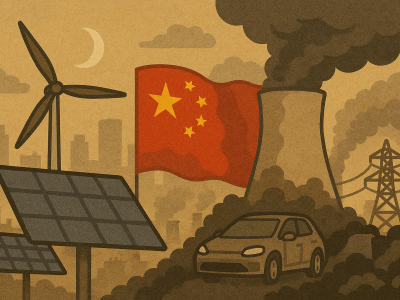
Procter & Gamble (P&G), one of the world’s largest consumer goods companies, has announced it will eliminate 7,000 jobs over the next two years, accounting for around 6% of its global workforce.
The job cuts represent 15% of its non-manufacturing headcount and form part of a broader cost-reduction strategy aimed at protecting margins as tariff pressures and weak global demand weigh on operations.
The changes were disclosed during a presentation at Deutsche Bank’s Global Consumer Conference in Paris, where P&G executives outlined a strategic shift to exit certain brands, categories, and product formats in select markets.
The move reflects a more aggressive approach to simplify operations, reallocate resources, and adapt its global portfolio to a volatile economic climate.
Trade war uncertainty puts pressure on pricing and planning
P&G’s decision to downsize comes against the backdrop of a prolonged US-led trade war, which has triggered tariff increases on key inputs and finished goods.
US President Donald Trump’s protectionist measures have led to broader disruptions across global supply chains, increasing cost burdens for companies like P&G.
Executives noted that the company is experiencing “uneven demand” as consumers respond cautiously in the face of rising inflation and economic uncertainty.
Earlier this year, P&G raised prices on a range of consumer products, including household staples such as Pampers and Tide, to offset input cost inflation.
Chief Financial Officer Andre Schulten and Chief Operating Officer Shailesh Jejurikar said the external environment remains highly unpredictable, with tariffs acting as a key driver of volatility.
They added that the new strategy is not a departure from past practices but rather an acceleration of the current transformation plan to bolster resilience.
Organisational restructuring to boost productivity and cost-efficiency
P&G reported 108,000 employees as of 30 June 2024.
While the company did not provide geographic or functional breakdowns of the upcoming layoffs, it clarified that the reductions will largely affect non-manufacturing functions such as marketing, administration, and product development.
Executives stated that the restructuring will broaden existing roles and reduce team sizes. This is intended to flatten P&G’s hierarchy, accelerate decision-making, and simplify its supply chain.
The company also expects to divest some brands and streamline its product mix in markets where performance has underwhelmed.
The job reductions and brand exits are part of a renewed emphasis on productivity to maintain a competitive edge in a lower-growth, higher-cost environment.
P&G said the plan aims to unlock operational savings that will be reinvested in brand innovation and consumer value delivery.
P&G signals continued price hikes amid margin defence strategy
The April price increases were described as just one of several tools available to P&G as it looks to defend profitability.
The company warned that more hikes may be necessary if tariffs persist or escalate.
Executives said P&G is prepared to use “every lever” to safeguard its earnings, including pricing, cost savings, and portfolio optimisation.
The firm did not specify the financial impact of the restructuring, but analysts expect one-off charges related to severance and asset write-downs to follow in upcoming quarters.
The announcement positions P&G as the latest multinational to respond decisively to tariff-induced cost pressures.
Several other consumer goods companies have flagged similar concerns in recent months, signalling that the effects of global trade frictions continue to ripple through the industry.
The post Procter & Gamble to cut 7,000 jobs as tariff impact hits demand appeared first on Invezz










